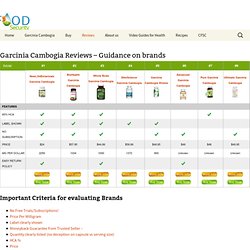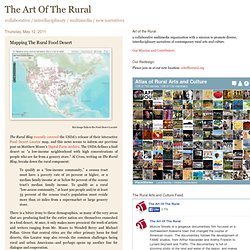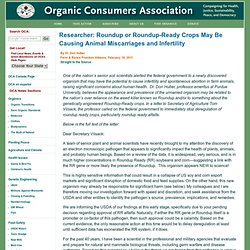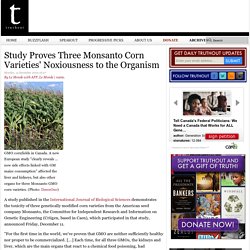

Welcome to the Community Food Security Coalition. Important Criteria for evaluating Brands Mg per SERVING or per CAPSULE?

Some brands use deception and trickery to make it seem like an ok deal. A good value depends on purity and cost per mg (milligram) of garcinia. If they list mg per SERVING on the label, customers don’t realize the 2 or 3 capsules they recommend per serving means, the mg per CAPSULE is 1/2 to 1/3 what they show in bold on the front of the bottle. They do this to trick consumers. Heavily advertised and promoted is not necessarily Good We are attempting to help the most people by providing guidance on brands they are finding in their research. Some brands that are very bad values are actually the most heavily advertised. The fact is that many of these shady sellers are actually affiliates doing affiliate marketing. Once they do that, they’re done. Why? Mapping The Rural Food Desert. This image links to the Food Desert Locator The Rural Blogrecently covered the USDA's release of their interactive Food Desert Locator map, and this news seems to inform our previous post on Matthew Moore's Digital Farm Archive.

The USDA defines a food desert as "a low-income neighborhood with high concentrations of people who are far from a grocery store. " Al Cross, writing on The Rural Blog, breaks down the rural component: To qualify as a “low-income community,” a census tract must have a poverty rate of 20 percent or higher, or a median family income at or below 80 percent of the census tract's median family income. To qualify as a rural “low-access community,” at least 500 people and/or at least 33 percent of the census tract's population must reside more than 10 miles from a supermarket or large grocery store. There is a bitter irony to these demographics, as many of the very areas that are producing food for the entire nation are themselves enmeshed in a food desert.
GMWatch. Sustainable Fisheries Partnership - About Us. Sustainable Fisheries Partnership (SFP) is a young and dynamic, business-focused NGO that is reshaping the world of corporate responsibility through the creation of powerful information tools and a methodology that allows companies to directly engage with suppliers of natural resources.

It does not campaign or provide eco-labels, but works to reduce the barriers to action by industry in creating a more sustainable world. SFP operates through two main principles: information and improvement. Information SFP has created a database of fisheries, accessible to all, which contains assessments of sustainability and improvement needs. Food & Water Watch. Non-GMO Project. Subscribe to The Cornucopia Institute Newsletter.
Enter your information to receive eNews, The Cornucopia Institute’s biweekly e-newsletter.

With stories about authentic organic food and farmers and opportunities to engage with pressing organic food issues, eNews empowers you to make choices that support community-scale organic farmers, your health, and the environment. All fields are required. We will never share or sell your e-mail address. Your personal data is held in strict confidence; please see our privacy policy. Researcher: Roundup or Roundup-Ready Crops May Be Causing Animal Miscarriages and Infertility. One of the nation’s senior soil scientists alerted the federal government to a newly discovered organism that may have the potential to cause infertility and spontaneous abortion in farm animals, raising significant concerns about human health.

Dr. Farm and Ranch Freedom Alliance. Study Proves Three Monsanto Corn Varieties' Noxiousness to the Organism. A study published in the International Journal of Biological Sciences demonstrates the toxicity of three genetically modified corn varieties from the American seed company Monsanto, the Committee for Independent Research and Information on Genetic Engineering (Criigen, based in Caen), which participated in that study, announced Friday, December 11.

"For the first time in the world, we've proven that GMO are neither sufficiently healthy nor proper to be commercialized. [...] Each time, for all three GMOs, the kidneys and liver, which are the main organs that react to a chemical food poisoning, had problems," indicated Gilles-Eric Séralini, an expert member of the Commission for Biotechnology Reevaluation, created by the EU in 2008. "Monsanto's tests, effected over 90 days, are obviously not of sufficient duration to be able to say whether chronic illnesses are caused. That's why we ask for tests over a period of at least two years," explained one researcher. Institute for Responsible Technology -
How the agrichemical industry turns failure into market opportunity. It’s always blue skies for the agrichemical industry Monsanto rolled out seeds genetically engineered to withstand its Roundup herbicide back in the mid-1990s.

Today, Roundup Ready crops blanket U.S. farmland. According to USDA figures, 90 percent of soybeans and 60 percent of corn and cotton planted in the United States contain the Roundup-resistant gene. Back-of-the envelope calculations tell me that total land devoted to Roundup Ready crops equals nearly 200,000 square miles — about two-thirds the size of Texas. Roundup Ready’s conquest of U.S. farmland has been an unmitigated boon for Monsanto shareholders.